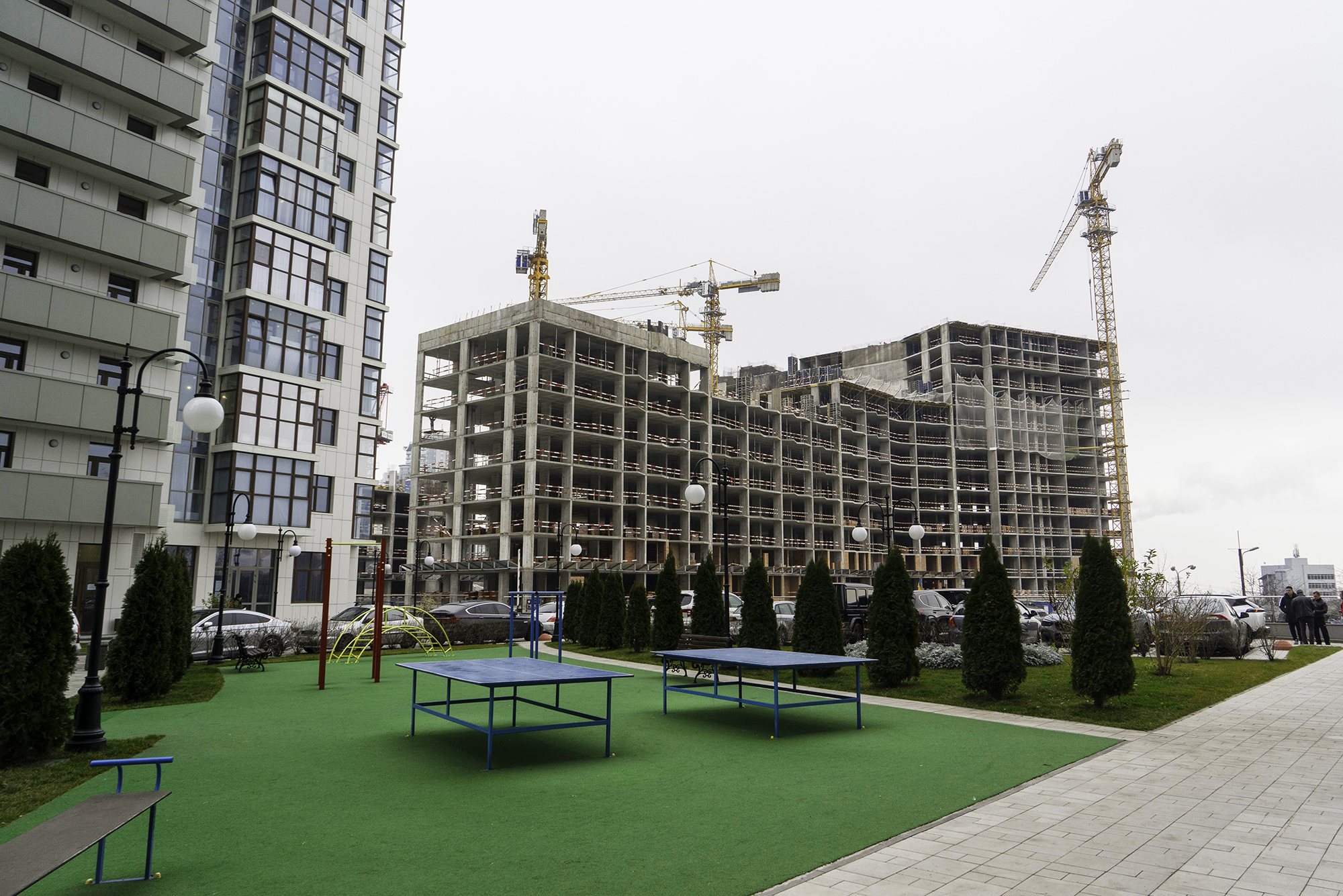What is your personal Scandinavia?
If you are commuting in Stockholm, perhaps your personal Scandinavia is the combo of a coffee and kanelbulle (cinnamon bun) from a kiosk in the tunnelbana (metro). If you have a penchant for long-haul lorries, a personal Scandinavia could be a Scania truck rumbling down the road. If you are a university student in Copenhagen, it might be a slightly-swerving bike ride back from the bar. For you who are partial to porcelain, a personal Scandinavia may be a cup by Figgjo.
There are personal Scandinavias aplenty—a 3.5 pound bulk bag of Swedish Fish purchased on Amazon Prime, a strut down the street with Lindstrøm looping through Bang & Olufsen headphones, Allemansrätten (the right of public access), and/or a pair of Björn Borg briefs.
Conceptualizations of a ‘personal Scandinavia’ are replete with personas and preternatural ties to place. Encouraging someone to share their personal Scandinavia represents a desire to understand what, for them, is special about Scandinavia. Responses indicate the extent to which the responder considers Scandinavia not only as something that can be perceived, but individually possessed. Replies likewise reveal proximities and disparities between what is regarded as special and what may seem standard or stereotypical.
To be sure, ‘personal Scandinavia’ is polemical. The initial query can be elaborated:
What is the sovereignty of your personal Scandinavia?
What is the shelf life of your personal Scandinavia?
What is the surplus of your personal Scandinavia?
What is the security of your personal Scandinavia?
The viscosity of your personal Scandinavia can be compared with that of a peer; though it is a slippery indicator, it is far simpler to assess than veracity.
In order to avoid excessive repetition, ‘personal Scandinavia’ can be abbreviated to ‘p.s.’ Alas, ‘p.s.’ is already the shorthand for ‘postscript’—an appendage added to the end of a letter, often to admit affection or implore an urgent answer. And abbreviation is a cousin to compilation; both are related in their pursuit of putting together. Scandinavia itself is simultaneously an abbreviation and a compilation—a synecdoche of states, a peninsula plus more, an amalgam of proprieties and properties.
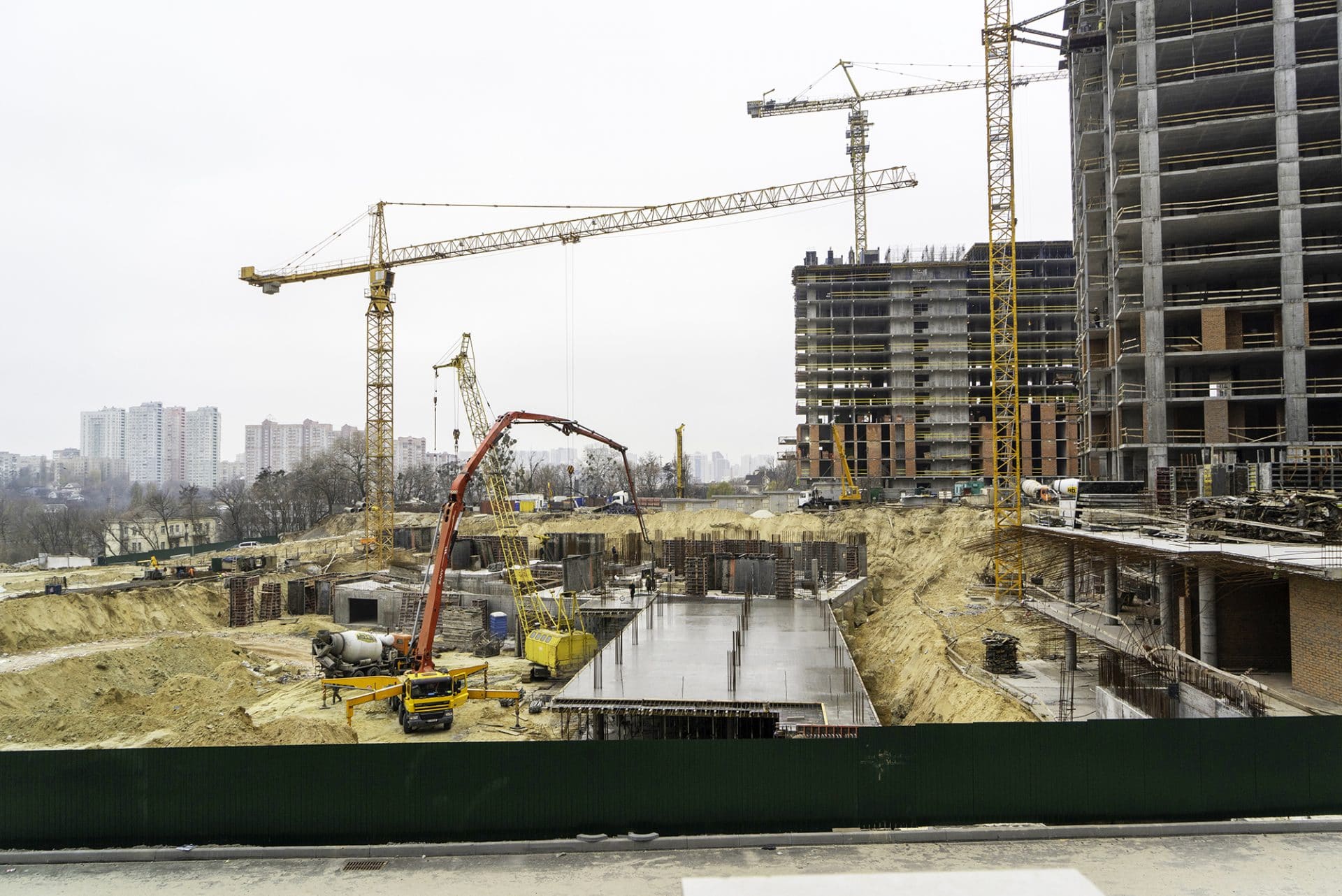
Stories of storeys
My impetus to muse on ‘personal Scandinavia’ began when I passed a billboard for a residential development in Kyiv, the Ukrainian capital where I have lived for much of the last three years. The advertisement was for RIEL Real Estate Corporation’s Nordica Residence, a zhytlovy kompleks (living complex) being built in Pechersk, one of the country’s most prestigious neighborhoods. Home to pilgrimage sites, museums, diplomatic missions, and the main offices of Ukraine’s government, Pechersk is a locale where suits mingle with spiritualism and upright intents tussle with egotistical excess. In this context, Nordica Residence bills itself as a sanctuary—a “progressive residential complex” consisting of “rational and well-thought-of details.”
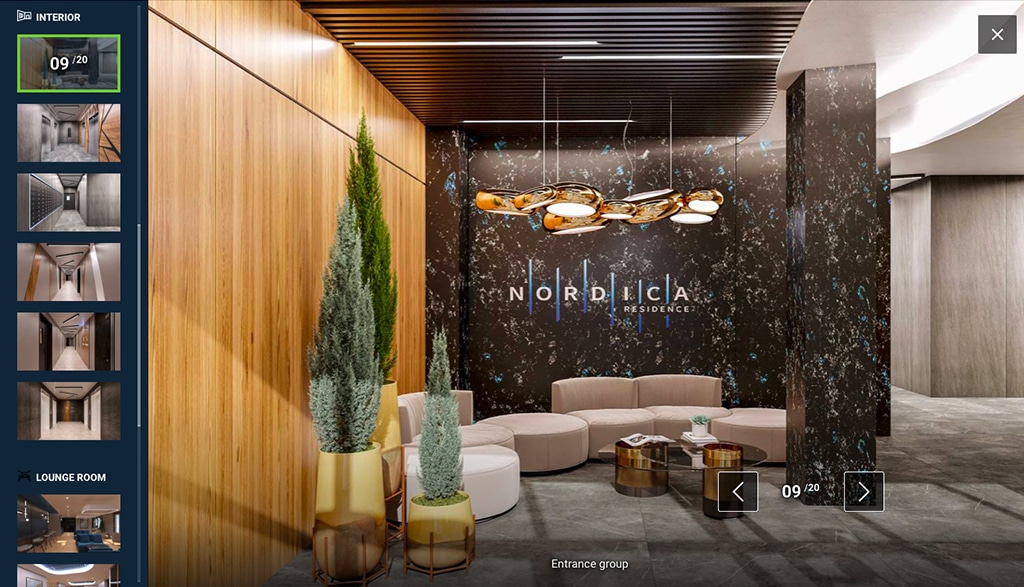
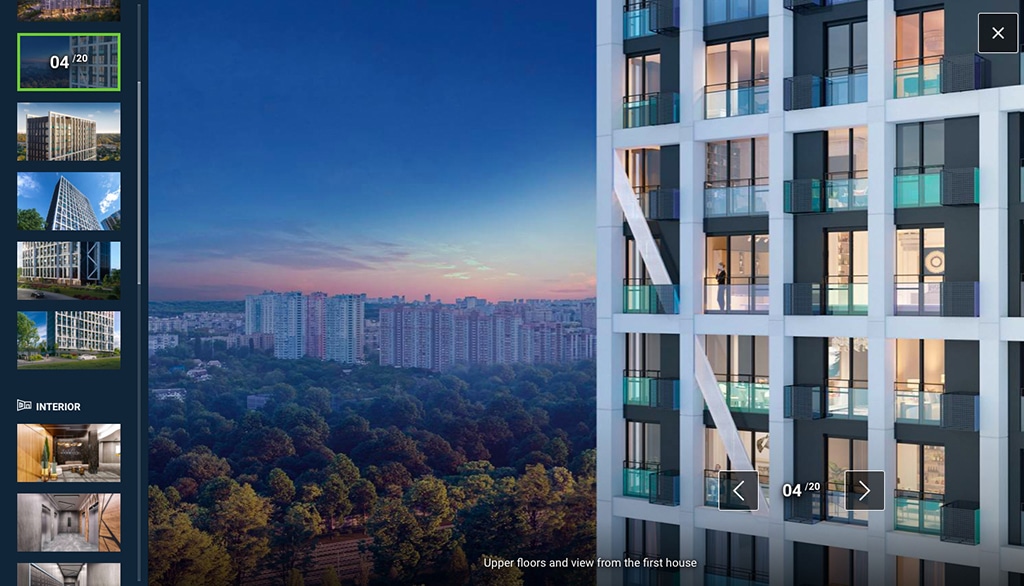
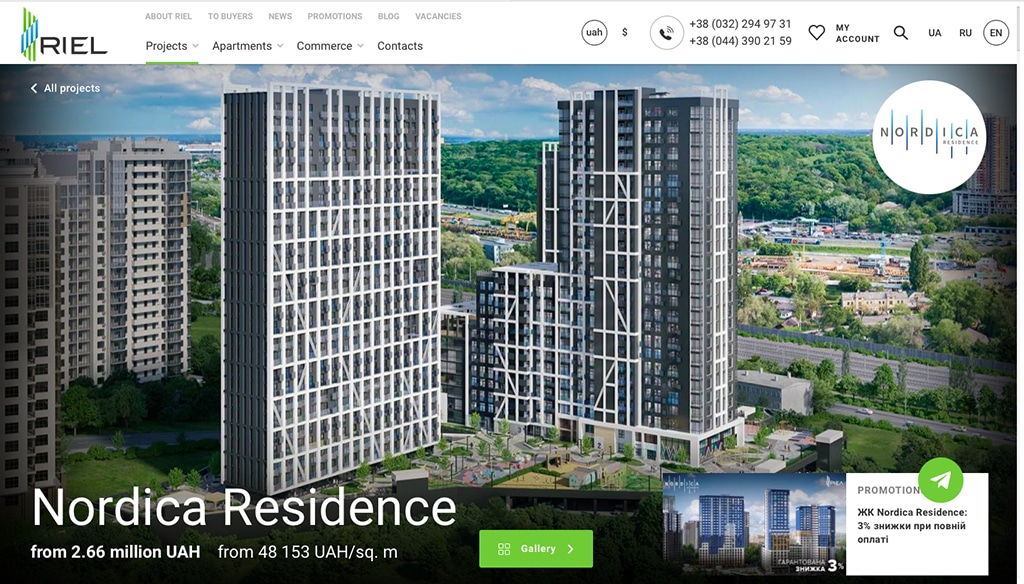
Nordica Residence is one of innumerous living complexes altering the lingo of Ukraine’s built environment and propelling the adaptation of identity in the post-socialist state. 1 To traverse the Ukrainian city today is to rub up against living complexes in all stages of construction. For some, the friction is hardly felt—its constancy makes it ignorable, or its grade is super fine. For others, the abrasion affects daily life, continuously chafing experiences and expectations. This article posits the living complex as a cultural touchstone of evocative import.
- This article departs from “Exclamatory Commonality in Contemporary Ukrainian Development,” an essay I wrote for the 2020 edition of the Tbilisi Architecture Biennial. That text introduces the phenomenon of expressive naming in recent Ukrainian construction as well as its implications. The essay will be published in the biennial’s forthcoming catalogue. An abstract can be read here: http://biennial.ge/en/project/exclamatory-commonality-in-contemporary-ukrainian-development/19
To interpret the living complex is to channel the intricacies of transcendent aspirations. RIEL’s Nordica Residence will comprise three towers ranging from fourteen to twenty-six storeys. As of the fall of 2021, one tower is in progress and two remain in the so-called “project phase.” Upon completion, the gated residence will have 468 apartments, an 80-seat kindergarten, a landscaped garden, and underground parking.
In form, Nordica Residence is familiar; the living complex’s design, however appealing, is quite average. In content, the development is sui generis (of its own kind); its promotional materials—published in Ukrainian, Russian, and English—put forth, and lay claim to, the concept of personal Scandinavia, pitching that “Nordica Residence is your personal Scandinavia.”
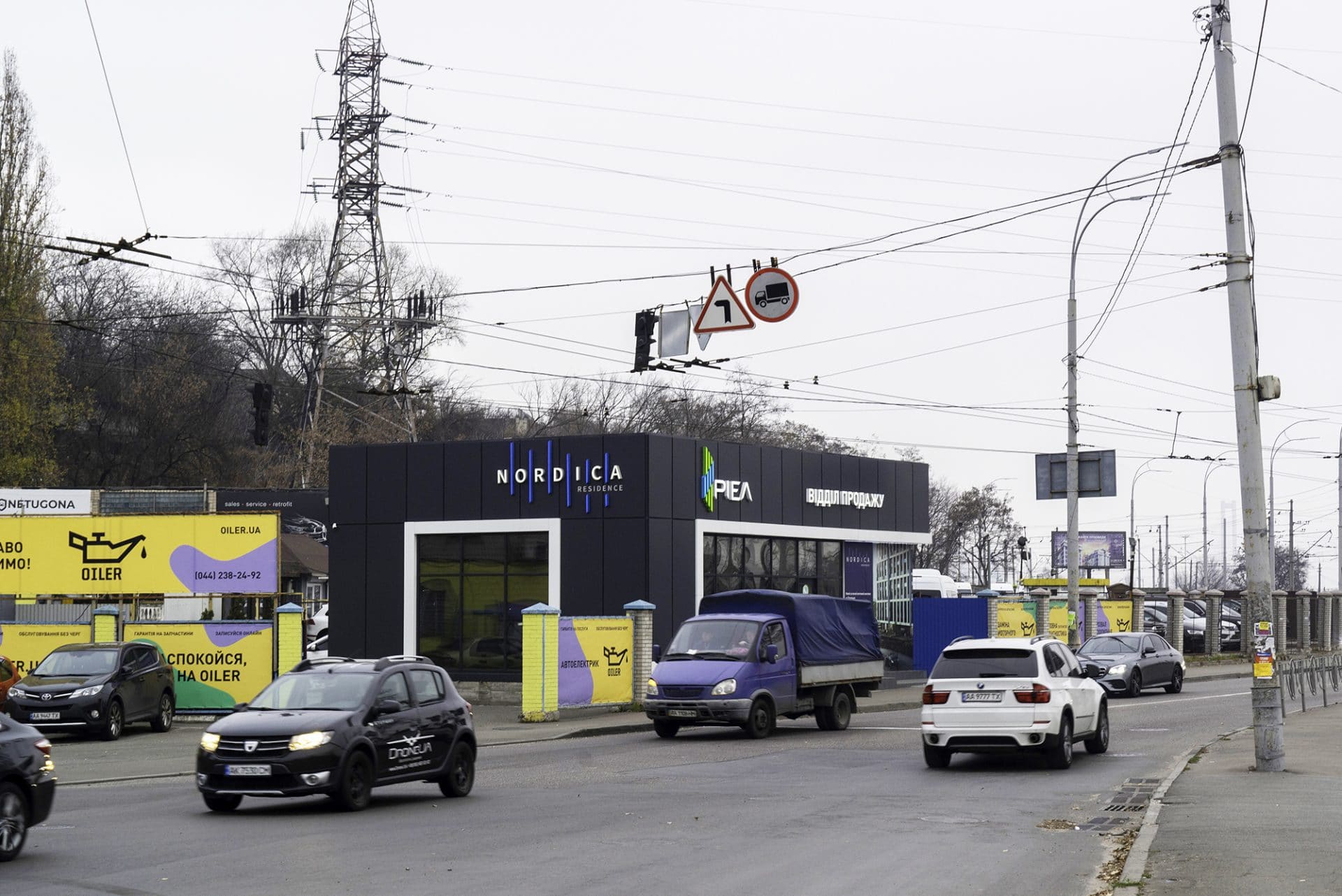
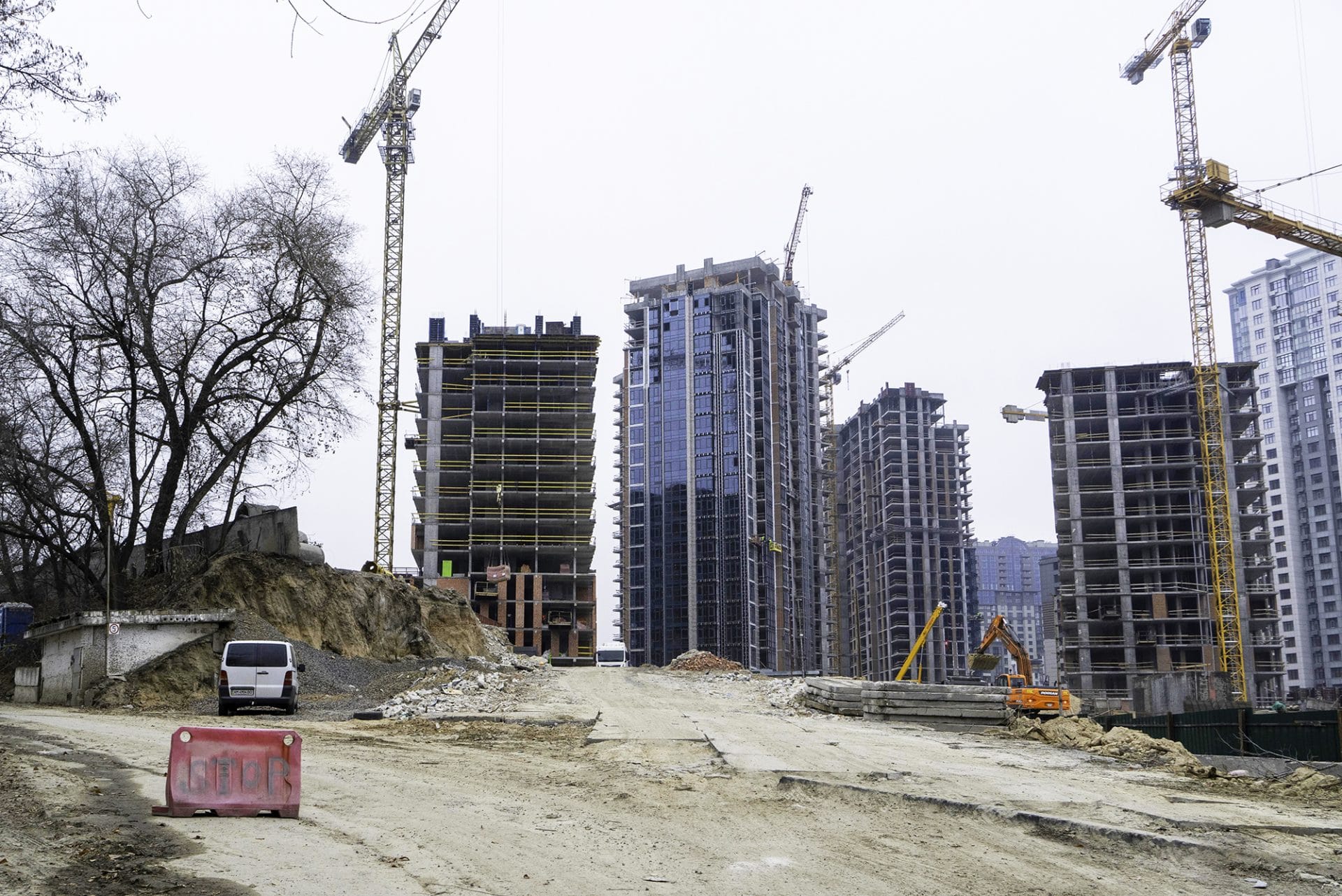
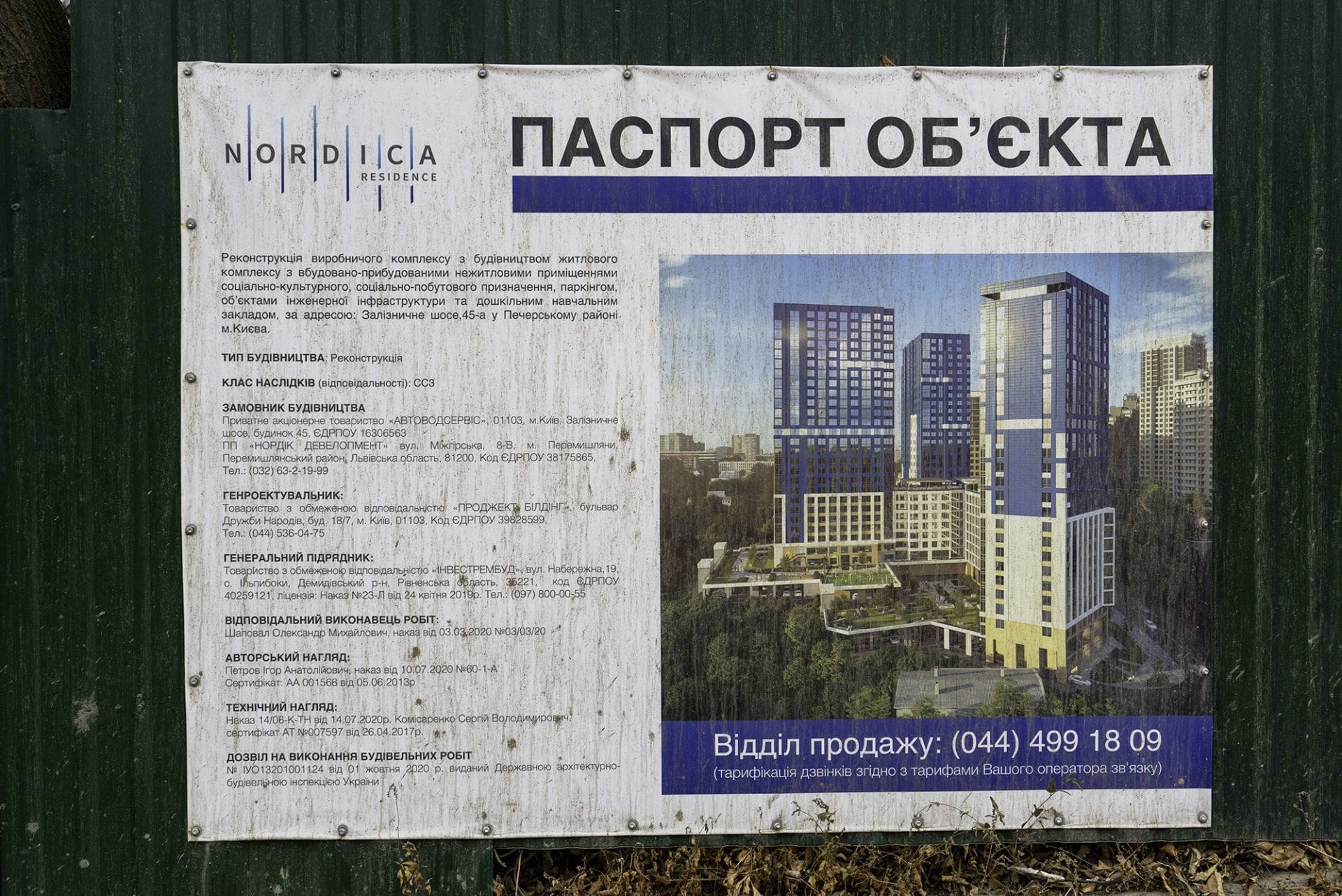
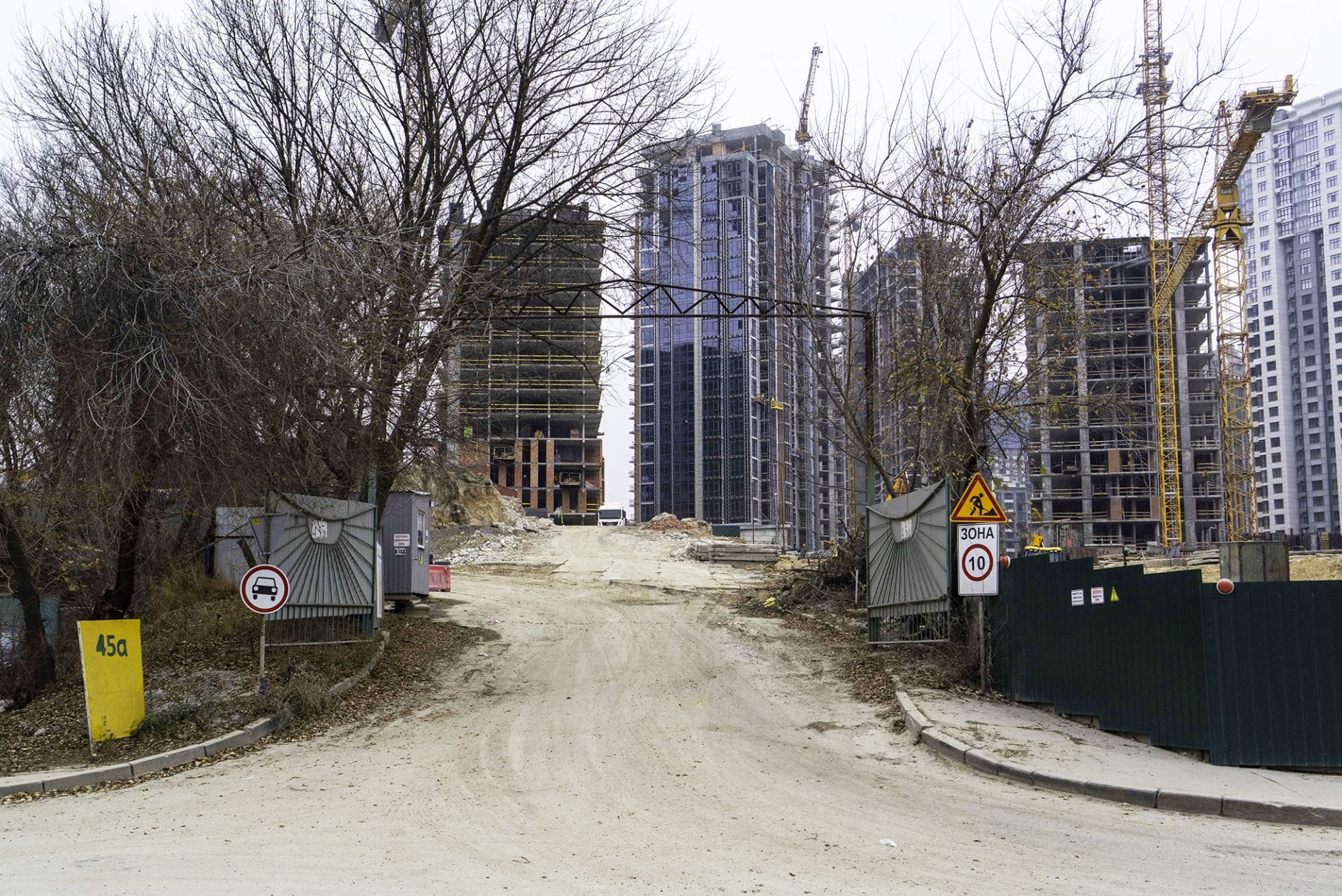
As a pitch, “Nordica Residence is your personal Scandinavia” is operable, capable of being put to experimental use. With the shift of one letter and a slight change in capitalization, it can become ‘A Nordic residence is your personal Scandinavia.’ This alteration is then prone to simplification, condensing to ‘Nordic residence is personal,’ ‘Nordic residence is Scandinavia,’ ‘Nordic is personal,’ and ‘Nordic is Scandinavia.’ 2
- I learned this the hard way. On a ferry ride from Bergen to Stavanger, an American friend and I competed as a team in a ship-wide trivia game. One of the quiz questions asked us to list the Scandinavian countries. Our list included Finland and Iceland, leading to our loss. The Germans won the top prize, much to our chagrin.
RIEL’s pitch tempts scrutiny, especially in its conflation of Nordic and Scandinavia, a synonymizing that the signatories of the 1962 Treaty of Co-operation between Denmark, Finland, Iceland, Norway, and Sweden would surely problematize. As all squares are rectangles, but not all rectangles are squares, all Scandinavia is Nordic, but not all Nordic is Scandinavia.
The profundity of Nordica Residence is reliant upon its developers’ capacity to contest, ignore, or not know such technicalities. 3 RIEL’s liberal use of artistic license compounds the consequence of linking their real estate venture to supposed Northern European customs and leveraging their holistic effect for sales purposes. 4
- I refer here to Donald Barthelme’s 1987 essay “Not Knowing,” in which he says the following about “the relation of art to world”: “I suggest that art is always a meditation upon external reality rather than a representation of external reality or a jackleg attempt to “be” external reality” (23). The American short story writer later concludes that “the aim of meditating about the world is finally to change the world” (24).
- In their 2007 article “Linkage, Leverage, and the Post-Communist Divide,” the political scientists Lucan A. Way and Steven Levitsky discuss the effects of linking and leveraging in pushes for regime change in Central Europe and Eurasia. ‘Linkage’ refers to the density of ties between former Communist countries and the West. ‘Leverage’ refers to the pressures that can be applied as a result of one side’s dependence on the other.
Incorporated compatibilities
Some of the poignancies of Nordica Residence’s promotional prose are so subtly delivered that they are liable to be missed. One of these instances was introduced earlier; the living complex, which demonstrates “not only a refined Scandinavian style on the outside, but also a Scandinavian spirit on the inside,” is constituted of “rational and well-thought-of details.” 5
- Reading this, I am reminded of the titular virtues evoked by Norway’s state-owned energy company—Equinor. What does equity, equanimity, and/or equality mean to this firm?
The use of “rational” feeds into international expectation. Comparatively speaking, Scandinavian society is reputable for its pragmatism; ‘best practices’ are apparently the norm rather than the exception, to a greater extent than in many other parts of the world. At the same time, incorporating “rational” into the pitch serves to temper the trepidations of those who purchase a flat in a living complex that is far from fruition. Buying property is an act of speculation; speculating on something rational insinuates a safer bet than on something illogical. Nordica Residence as your personal Scandinavia is purported to be a safe place to park your assets. 6
- Your degree of confidence when engaging in an act of speculation depends on a confluence of factors. Prior/inside knowledge can shape your impression of the trajectory of that which you are speculating on, scaling the investment you are willing to make.
“Well-thought-of” is a linguistic sleight of hand. The descriptor usually used when making a point like this is ‘well-thought-out,’ as in: Jeppe’s plan to visit the museum in the morning was well-thought-out because it meant he got to enjoy the exhibitions in relative tranquility before the afternoon rush. Swapping ‘out’ for ‘of,’ RIEL conjures reverence, in the manner of: For her steadfast commitment to improving the fate of the dispossessed, Ruth Bader Ginsburg is one of the most well-thought-of Supreme Court justices in U.S. history.
‘Well-thought-out details’ would suggest that Nordica Residence is in the hands of an astute architect. ‘Well-thought-of details’ suggests that the living complex’s particulars have earned acclaim, even though, at present, they primarily exist as plans. The American industrialist Henry Ford famously said: “you can’t build a reputation on what you are going to do.” The Ukrainian developer RIEL responds: “why not?”
It is intriguing to note the closeness of the living complex to various ‘homes’ of soft power in Kyiv, including America House, a cultural and educational hub backed by the U.S. government, and House of Europe, “an EU-funded programme fostering professional and creative exchange between Ukrainians and their colleagues in EU countries and the UK.” Nordica Residence is neighbors with these diplomatic ventures, but maintains its own private similitude.
In his 2001 introduction to Democratic Consolidation in Eastern Europe. International and Transnational Factors, the political scientist Alex Pravda offers a precursory reading of the relationship between marketization and democratization in the former Communist bloc, writing that: “the ultimate benefit and rationale [for both marketization and democratization] lies in enlarging the sphere of compatible, Western-like, systems” (10). The author develops this point, saying: “Compatibility and likeness promise to deliver freedom and security as well as plenty.” In other words, compatibility is recognized as a vehicle for reaching abundance, and protecting it too. The compatibility sought by Nordica Residence pools a panoply of owners resolved to realize their own Scandinavian likeness.
What is the threshold of foreign dwelling? For those who seek residence in a foreign country, it is usually necessary to first receive a residency permit from the embassy of that foreign country in their country of origin. I am sure RIEL did not seek permission to present their residence as a personal Scandinavia from the embassies of Norway, Denmark, or Sweden in Kyiv. There was never a need to, as there is no established protocol for appraising whether such a name is proper. 7
- The right to name is within RIEL’s corporate remit, or area of authority. Another form of remit, remittances, are a critical part of the Ukrainian economy. Defined by the International Monetary Fund as the cash or goods sent home by migrants to support their families, remittances accounted for approximately 9.778% of the country’s gross domestic product (GDP) in 2020 (World Bank). Since 2015, the percentage has fluctuated between 9.309% and 11.225%.
Proper passages
In his 1984 book The Practice of Everyday Life, Michel de Certeau pens a chapter on “Walking in the city” wherein he comments on the orienting ability of proper names in urban contexts. Per the French Jesuit scholar, “proper names carve out pockets of hidden and familiar meanings […] in the spaces brutally lit by an alien reason” (104). He continues the thought on the same page, saying “they are the impetus of movements, like vocations and calls that turn or divert an itinerary by giving it a meaning (or a direction) that was previously unforeseen. These names create a nowhere in places; they change them into passages.”
Ukraine is a vast country. By area, it is the second largest in Europe, trailing only Russia. An immense amount of the country’s leading figures and forces are concentrated in Pechersk, the Kyiv neighborhood where, as previously mentioned, Nordica Residence is located. In short, Pechersk is seriously somewhere. Yet, if de Certeau’s philosophy holds, the living complex creates a nowhere in this place. Via its name, the development changes its multi-hectare parcel of Pechersk into a passage.
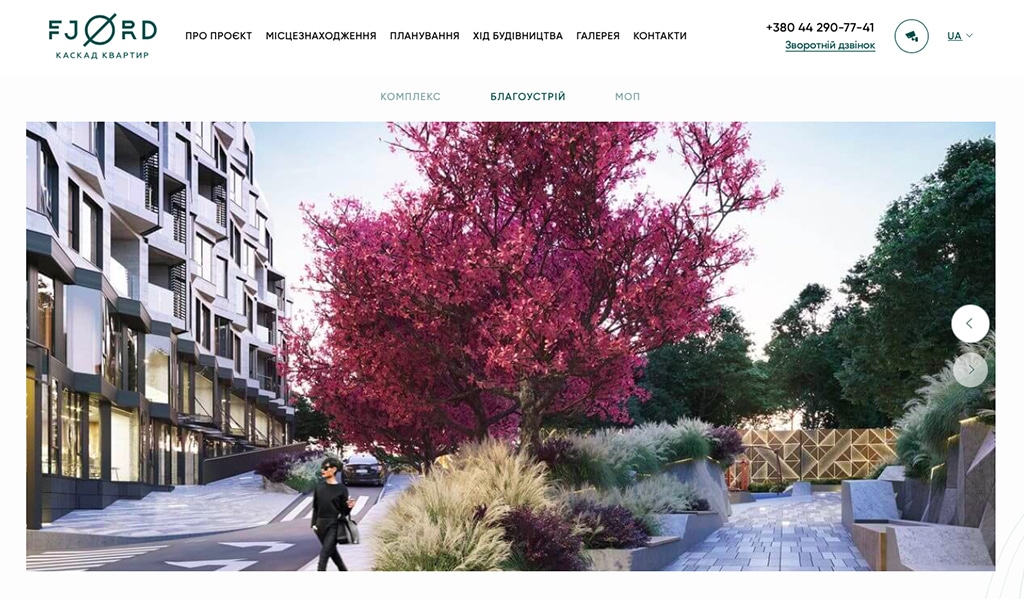
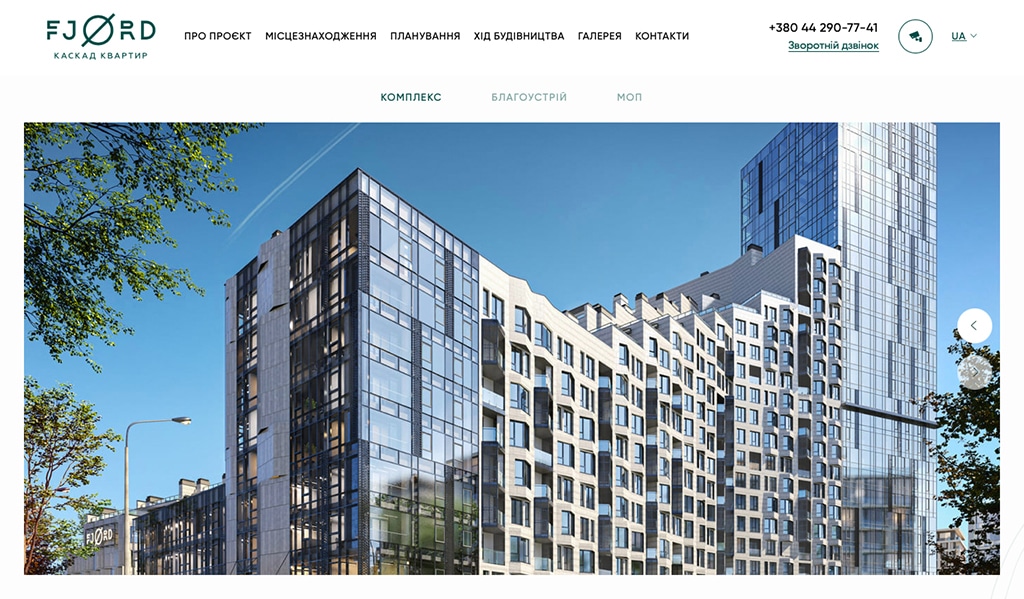
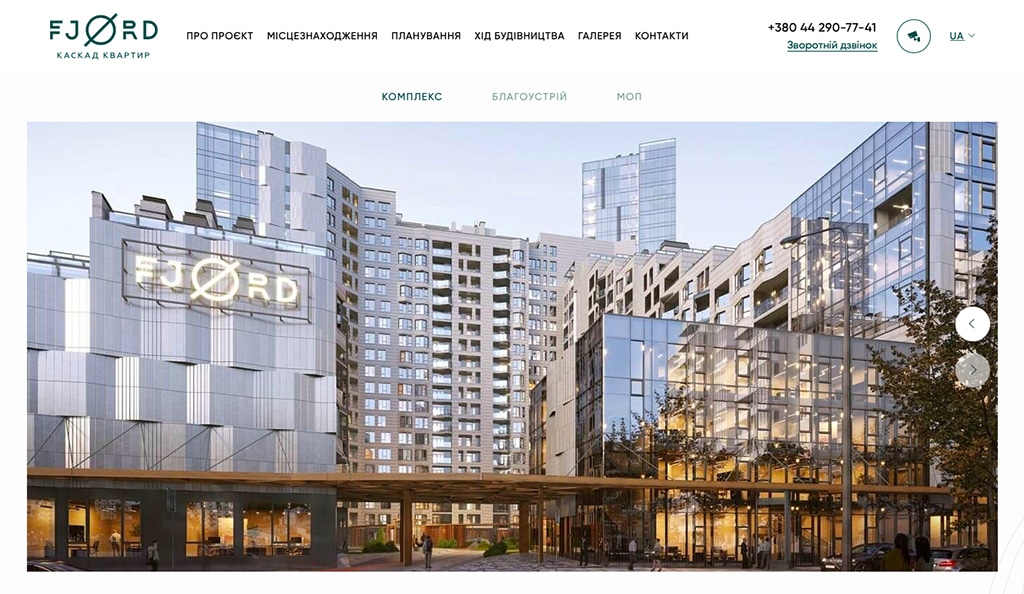
A few blocks away, another passage is in preparation. The developer ENSO is constructing FJØRD House, “a cascade of apartments that will not leave anyone indifferent.” An alternate take on personal Scandinavia, FJØRD House is “a meeting place of contrasts. Beauty and functionality, slopes and plains, entertainment and relaxation, nature and the metropolis.” 8
- ENSO’s use of ‘ø’ explicitly connects the fjord as a standout feature of the regional landscape with a letter used in the languages spoken by many who live in the region. Such accentuation is a recurring tactic in the developer’s projects. In Kyiv’s Shevchenkivskyi district, ENSO is finishing their Poética living complex, which fosters “a poetic, sublime way of life through its unique architecture and proximity to Pushkin Park, where you can wander and immerse yourself in poetic thoughts.” ENSO has titled its development with the Spanish word for ‘poetics’ and tethered it to a park named for the 19th century titan of Russian poetry. Their living complex, accessible to a ‘business-class’ client, is named for a general theory of literary discourse. The park, accessible to the general public, is named for an individual widely-considered the founder of modern Russian literature.
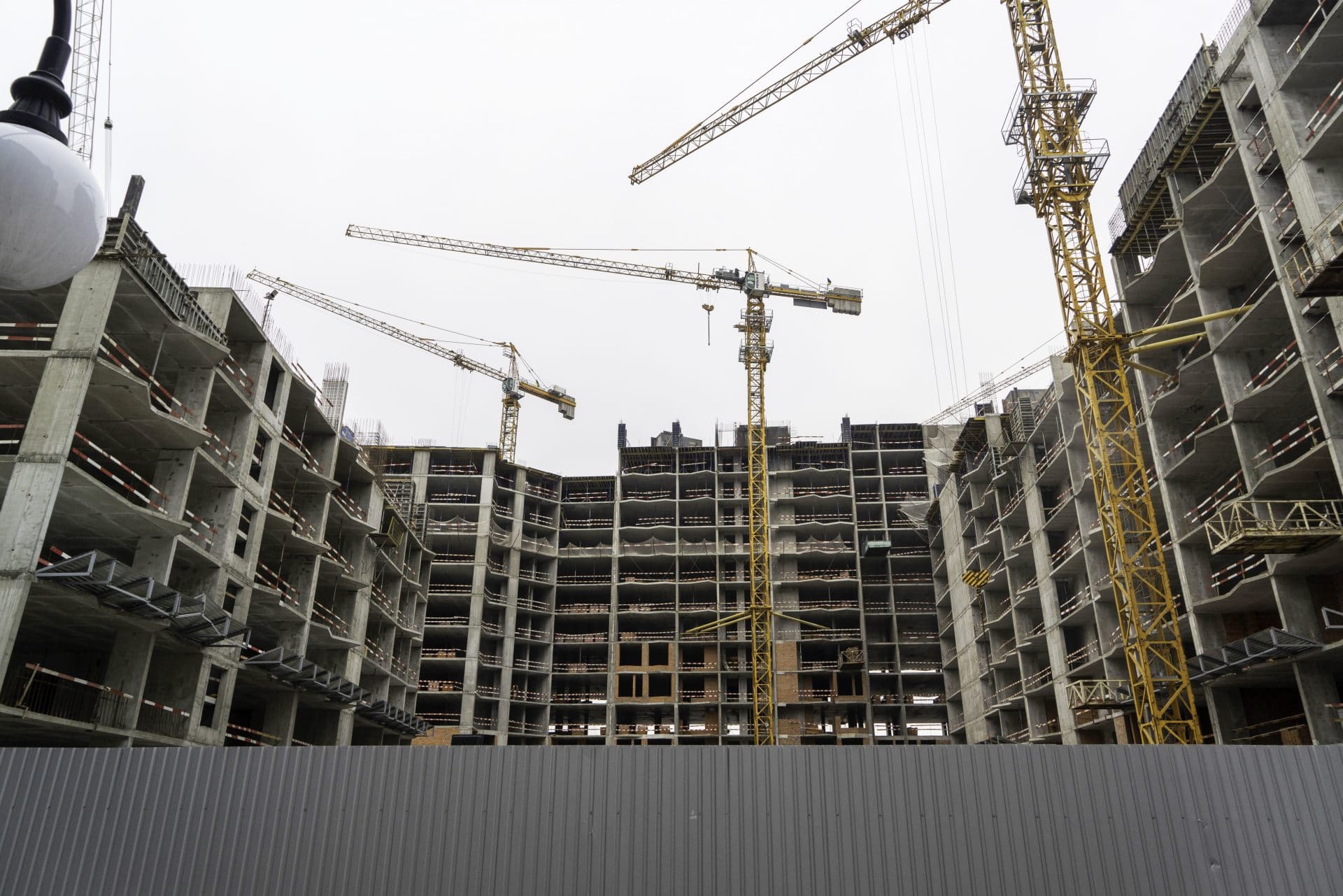
Whereas Nordica Residence stakes its claim to Northern European social values, FJØRD House associates itself with an emblematic feature of the region’s geography. The living and spatial conditions that are cued by each analogy differ significantly. RIEL tones down the drama while ENSO dials it up.
The premise that the social values and geography of a region can be split—sold and inhabited separately—is ripe for disputation. In Kyiv, the structures (premises) that do just that are eleven minutes walking distance from one another, shorter if you are willing to hop a few fences.
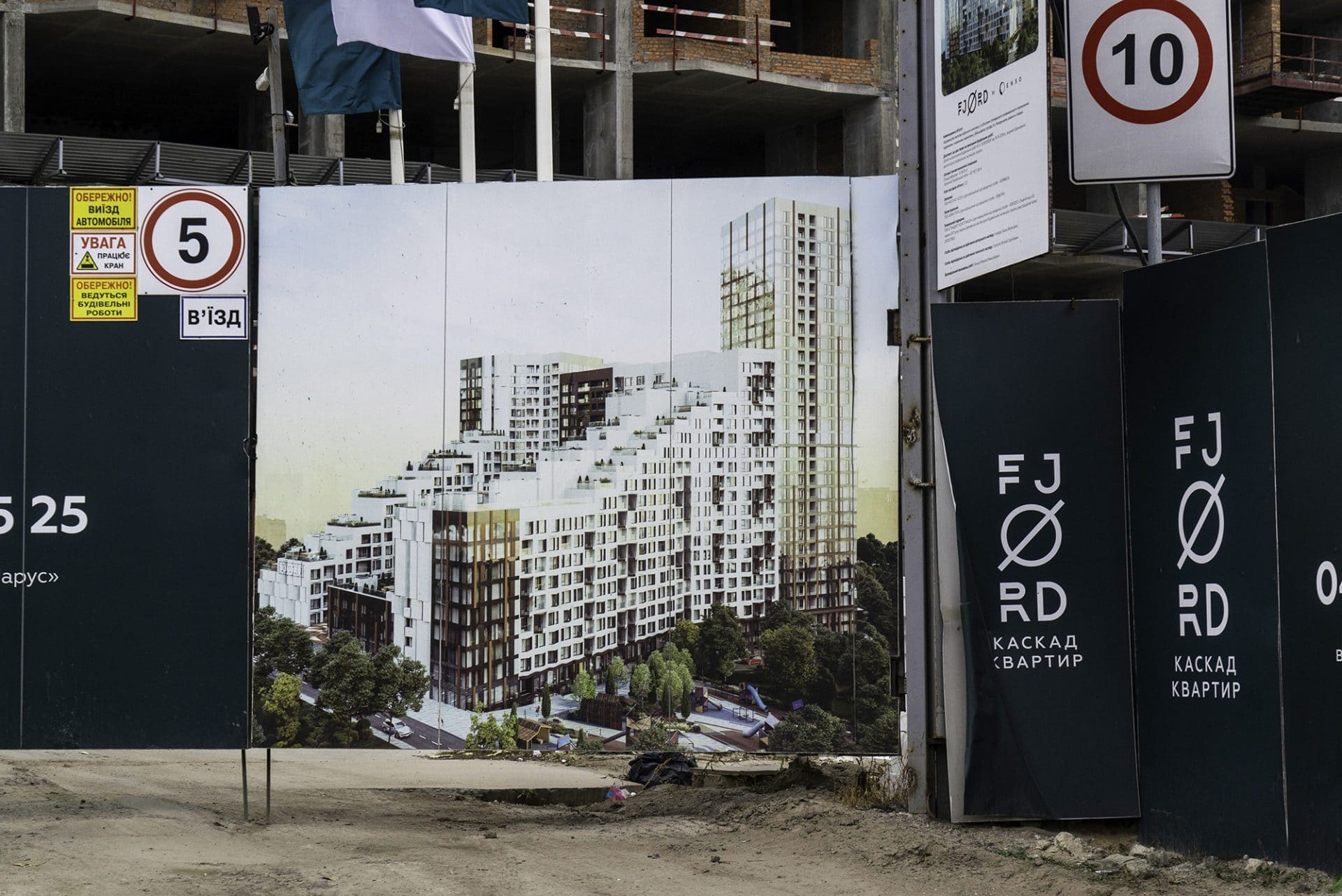
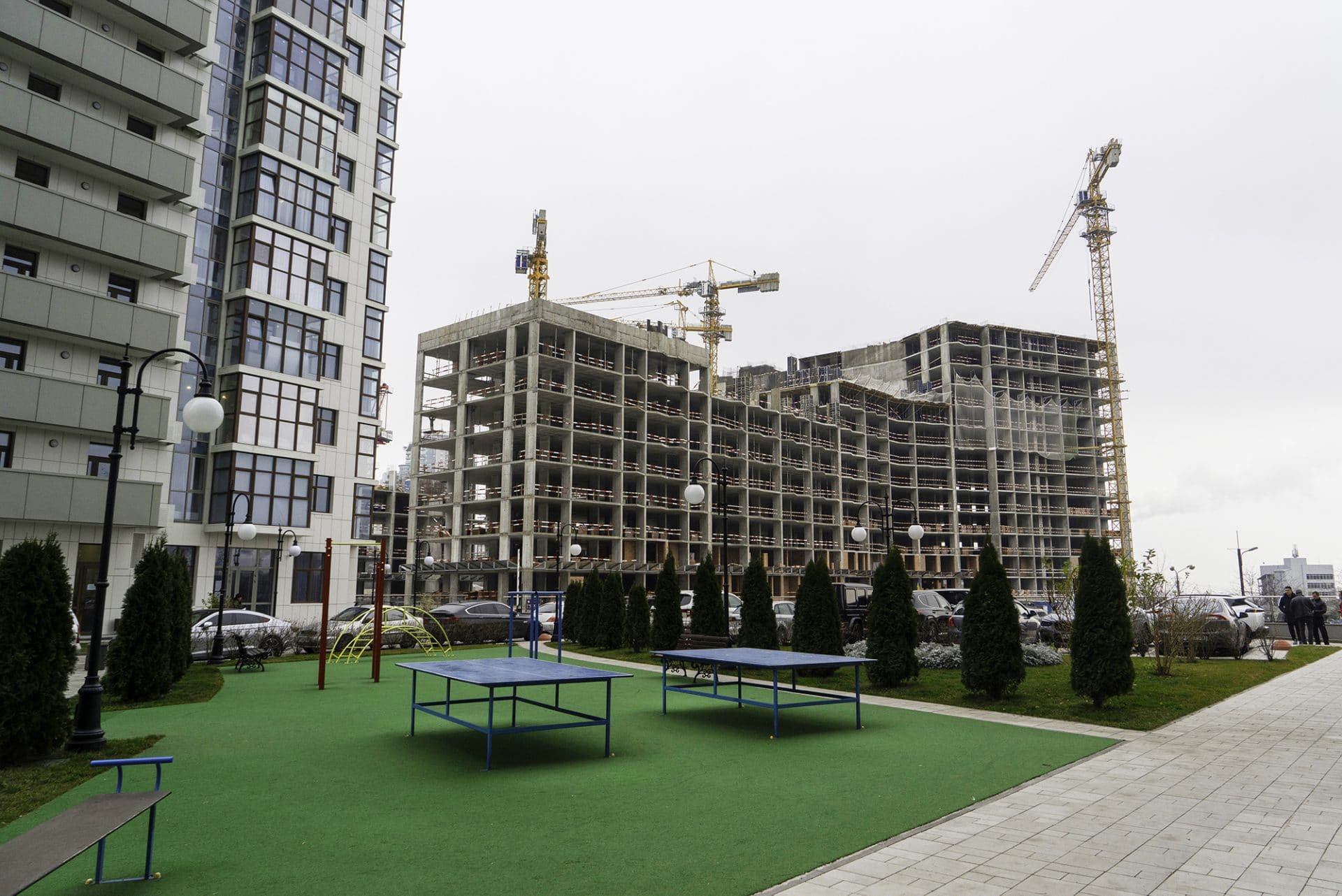
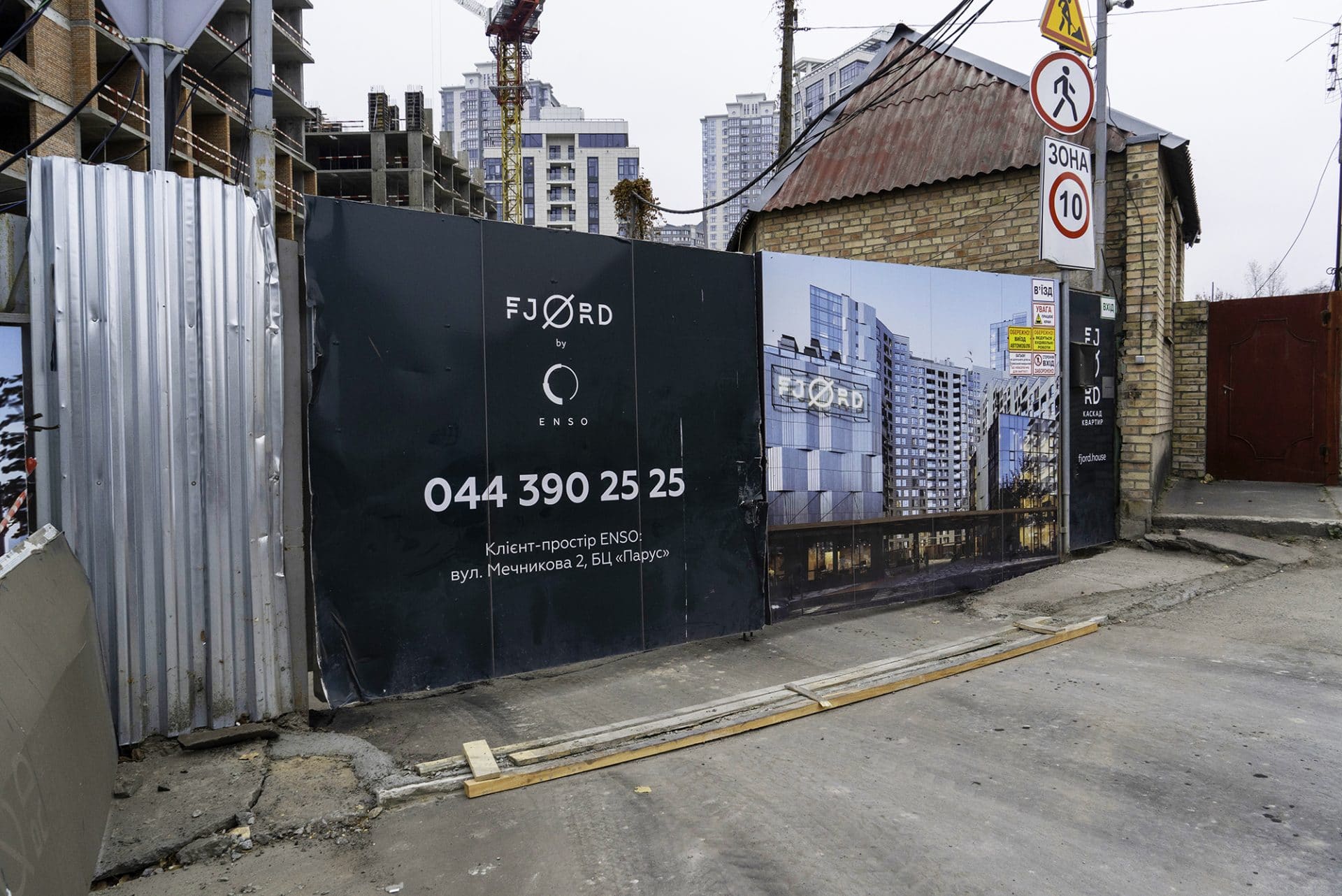
Invested returns
In the summer of 2018, I had the opportunity to spend three weeks in Stavanger. The motivation for my visit was to meet Cory Arcangel, an artist who has called the city home since the mid-2010s. Cory and I grew up and attended the same school in Buffalo, New York, albeit several decades apart. I was, and remain, fascinated by his artistic practice, and was keen to learn how his perspective had evolved in view of his settling in Norway.
At the time, Cory was running the now-closed 34-square-meter flagship store for his Arcangel Surfware imprint in Stavanger Øst, an outpost he told ARTnews looked “a little bit like a cellphone repair shop, and a little bit like a clothing store.” The inventory, an edit of items from multiple seasons of the artist’s merchandise and software brand, included fidget spinners, slides, publications, and sweatsuits. There was also an in-house gallery, Flagship A.S., which was then exhibiting Burt Barr’s Watching the Paint Dry, Red (2006).
In an interview I conducted with Cory while in Stavanger, I asked him what an exhibition of merchwear—a subsection of streetwear where Arcangel Surfware fits smoothly—could hypothetically be called. He responded “Intelligent Business,” a nod to Microsoft’s Business Intelligence solutions, which aim to “help any organization transform data into intelligent, easy-to-understand visualizations that are surfaced wherever decisions are made.”
In preparing this article, I have been reflecting on my 2018 trip and, more specifically, returning to Cory’s Intelligent Business response. The return coincides with my taking Circulating Circuits, a seminar that explores “the ways in which agency and circulation continue throughout moments of distance and confinement.” Taught by Renée Green and Jesal Kapadia at the Massachusetts Institute of Technology, the course has corroborated my conviction that the imagined encounters commenced by RIEL Real Estate Corporation and ENSO carry weight. Together and apart, worlds (and personal Scandinavias) are always being wrought.
Life is complex, and so is the Ukrainian living complex, as typified by Nordica Residence and FJØRD House. Inspired by Cory’s switching Business Intelligence to Intelligent Business, I am compelled to conceive of Complex Living as its own theoretical construct.
Constituent complexities
Two core traits define the Ukrainian living complex. First, it is a new construction rather than a product of a retrofitting process. Second, with its specific attitude and surfeit amenities, the living complex poses as something more than an anonymous apartment block. Conjoined, these traits connote that the country’s extant residential infrastructure is merely subsisting in the ever-extending shadow of the copious living complex. 9
- Slotted into strips and swathes of previously undeveloped, or underdeveloped, land, the living complex shepherds densification at the same time it heralds departure.
The living complex perpetually appears in the process of being put together and, owing to its omnipresent promotion, peddled. ‘Living’ is postulated as a coming-into-being, a proceeding towards some tempting ‘complex.’ This outlook is also a surreptitious ploy for buying-in early; first-movers, who are also fellow travelers in the cases of Nordica Residence and FJØRD House, live longest.
The ‘complex’ in ‘living complex’ stands foremost for a demarcated group of related buildings. The bulk of the buildings’ square meters are allocated to lodging units. The remaining space is filled with add-ons. For Nordica Residence, this will include the aforementioned kindergarten, landscaped garden, and underground parking as well as a rooftop lounge and parcel storage room. For FJØRD House, this will include a yoga terrace, a room with golf simulators and mini putt-putt, as well as an observation deck with a telescope for taking in the sights of the city. 10
- The prominence of the observation deck at FJØRD House implies that the ‘complex’ in ‘living complex’ is also the same ‘complex’ in ‘superiority complex. ENSO sells an elevated vantage, an ascent to a covetable perch.
Coalescing the influences and inclinations of the Ukrainian living complex, Complex Living can thus be conveyed as a deep crossing of living processes, residing with nuanced, supranational narratives. Complex Living homes in on expeditionary exclamations. The living complexes introduced in this article transpose and confound accommodated assumptions, structuring personal Scandinavias of all aspects and scales.
Alex Fisher (b. 1996) is a writer and curator from Buffalo, New York based in Knislinge, Sweden and Cambridge, Massachusetts. He spent 2019-2020 researching Ukrainian contemporary art and culture as a Fulbright scholar affiliated with IZOLYATSIA and Mystetskyi Arsenal. He holds Bachelor’s degrees in History of Art and Economics from the University of Pennsylvania and is currently pursuing a Master’s in Design Studies at the Harvard University Graduate School of Design. He is the artistic coordinator of Milvus Artistic Research Center.


